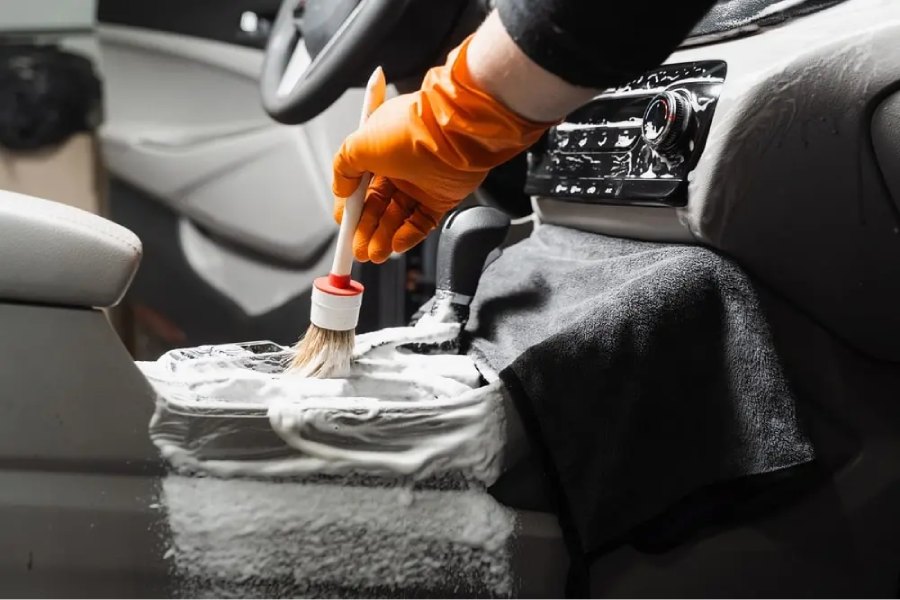Many car enthusiasts turn to car detailing to keep their vehicles looking brand new. Unlike the mechanical aspect, this practice focuses on the machine’s cosmetic appearance and aesthetics. To ensure even the smallest detail in both the interior and exterior is considered, our professional car detailing service makes use of a plethora of brushes. That’s why, in this article, we’ll focus on discovering what are wire brushes used for in car detailing and the best practices.
By giving you an insight into the types of available wire brushes, you’ll better understand how they impact the car detailing process. Furthermore, we’ll elaborate on their use in exterior, interior, and engine bay cleaning applications. With our professional experience in the field, we’ll also inform you about the correct tool maintenance and give you some expert tips you can rely on.
Continue reading to discover all there is to know about wire brushes and their use in car detailing!
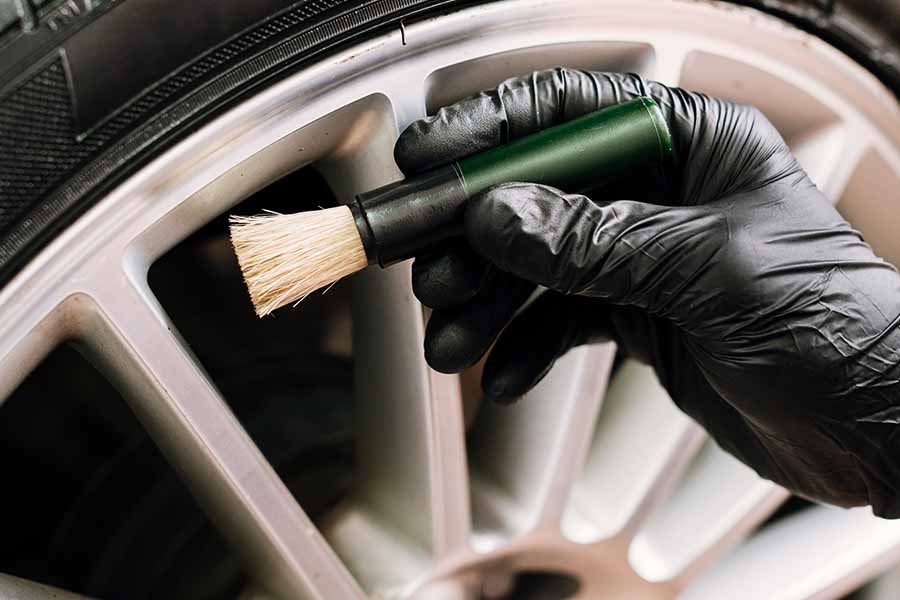
What Are Wire Brushes Used for in Car Detailing
As mentioned, wire brushes are an essential tool found in any professional car detailer’s toolkit. Even though there are many different types available, these brushes are mostly used to clean stubborn materials from thick metallic surfaces. Depending on the type you choose, some of the designs are ideal for preparing and finishing a product.
The versatility of these tools makes them suitable for various industries, ranging from car detailing to electronics welding. However, when it comes to our field of service, wire brushes are especially important in the following:
- Exterior uses
- Interior applications
- Engine bay cleaning
To better understand how they assist with the whole car detailing process, we’ll elaborate on each of their uses while also explaining the different brush types.
Types of wire brushes
The first thing you should know about wire brushes before using them is their vast variety. Some of the most common types of wire brushes you may come across are the following:
- Wheel brushes
- Scratch brushes
- Channel scratch brushes
- Cup brushes
- Welder brushes
- Twisted brushes
- Parts cleaning brushes
Wheel brushes
The wheel brush’s bristles are made from steel or brass and can vary from six to eight inches. Since their design can be both crimped and knotted, they’re used for straight-line cleaning during polishing, deburring, finishing, and paint removal.
Scratch brushes
Scratch brushes are mainly used for rust, paint, and dirt removal. Besides the ability to choose between steel, brass, or bronze bristles, they also come with plastic or wood handles.
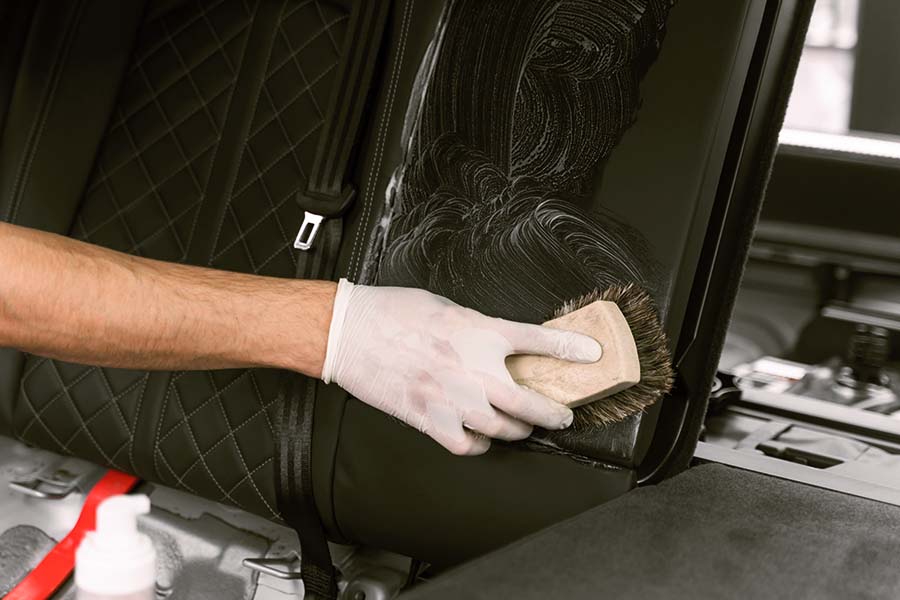
Channel scratch brushes
Channel scratch brushes are best used for cleaning threads and removing light rust and paint. Made from the same materials as scratch brushes, this option also varies in length, commonly ranging from seven to 12 inches. Furthermore, the handle can be either straight or bent, depending on its use.
Cup brushes
This brush has a cup-shaped base and wire filaments made of brass, steel, or stainless steel. With high-density knotted, rectangular, crimped, or twisted bristles, they’re ideal for polishing, preparing, and descaling surfaces.
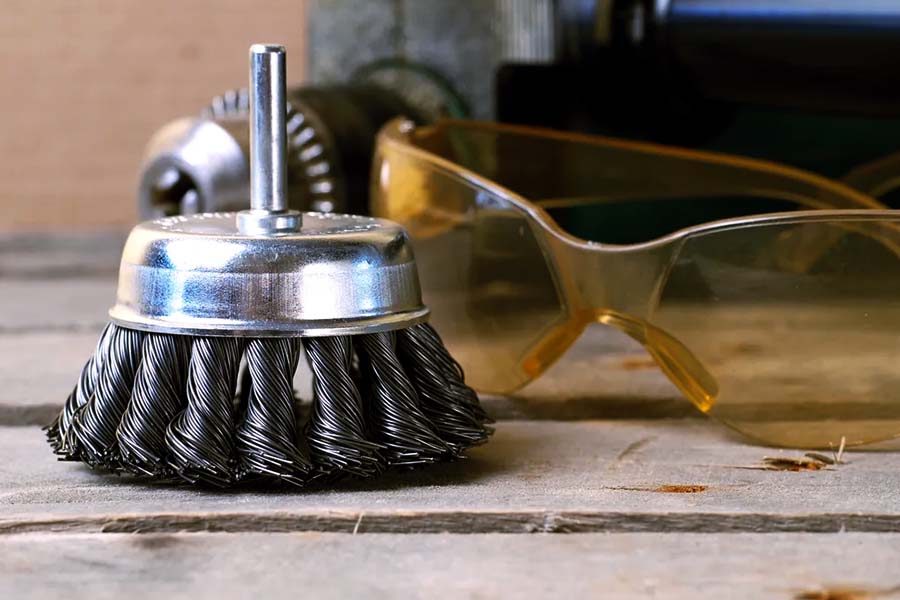
Welder brushes
With a design similar to a toothbrush, these tools come with wood or plastic handles and steel, brass, bronze, aluminum, or nylon bristles. They’re highly durable and ideal for removal of oil, dirt, and dust. Since they can easily fit into tight spots, they can be used during soldering, brazing, and welding.
Twisted brushes
Since this design is used for numerous types of brushes, these tools have various names, including tube, spiral, pipe, or internal cleaning brushes. They usually have twisted stem wires that hold the bristles between them. Furthermore, these brushes are available in miniature and micro sizes, so they can easily clean smaller holes in metallic surfaces.
Parts cleaning brushes
Lastly, parts cleaning brushes are another small-sized tool that can be used to clean motor parts in grease solvents. Due to their size, they can easily fit into smaller cracks for efficient washing.

Exterior uses
Wire brushes in car detailing are mostly used on the vehicle’s exterior. Due to their abrasive texture, they’re especially effective for abrading and paint or rust removal. However, multiple wire brushes can also be used for finishing and cleaning. Since there are both manual and electronic options available, they can easily prepare a surface when it’s time to apply a coating by smoothening it.
Another exterior use of such brushes is for cleaning hard-to-get pipes. The twisted brush type comes in different sizes, so it can easily remove any unwanted materials from tight spots. By conforming to the shape of the pipe, they can also clear any obstructions in its path.
If you notice that static electricity starts accumulating on the vehicle’s surface during assembly, these brushes can also be used to remove it. Even though it’s normal for it to occur during such operations, remember that it’s known to attract dust and dirt. Besides affecting the overall look, these substances may be hard and time-consuming to remove. By using wire brushes during this process, they will efficiently pick up static electricity and prevent it from affecting the vehicle.
Lastly, these brushes can clean tires from rust and dirt in tight spaces.
Interior applications
The second use of wire brushes in car detailing is for interior applications. As mentioned, some of these tools are designed specifically to fit into hard-to-get places for detailed cleaning. Thus, there are numerous brush types that are commonly used to clean the air conditioner vents quickly and easily.
Another common use of these tools for the interior is cleaning the inside of the door panels. Since it’s common for rust to appear in these areas, you can easily remove any spots affecting your vehicle’s look.
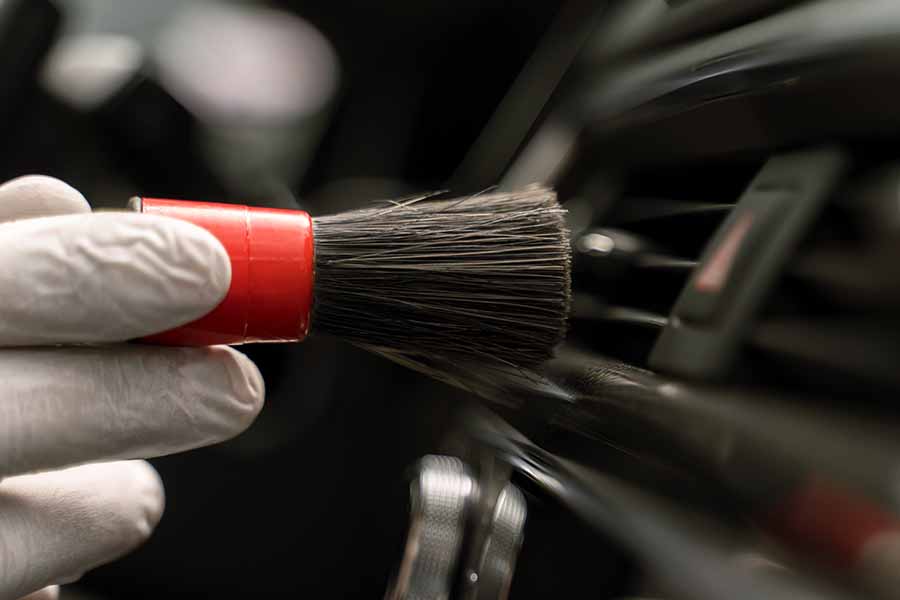
Engine bay cleaning brushes
These wire brushes can be used for fast and efficient engine bay cleaning. Keeping this area of your vehicle clean is essential for it to run as smoothly as possible. Since various sizes of brushes are available, they can be used for cleaning larger areas and tight spots.
However, remember to be mindful of the materials the parts are made from to avoid damaging them. We always recommend using softer wire brushes to prevent any issues from occurring.
Precautions and Best Practices
As with any car maintenance practice, using wire brushes in car detailing comes with a set of precautions. To ensure both your and your equipment’s safety, here’s what you should watch out for:
- Inspection – always inspect your tools before you use them. If you notice any rust or damage, we don’t recommend using them.
- Storage – store your brushes in their original boxes so they don’t get damaged. This way, you’ll prevent any premature damage caused by humidity, heat, acids, liquids, and fumes.
- Protective gear – invest in a full set of appropriate PPE, including hearing protection, safety shoes and glasses, gloves, masks, head protection, and a heavy leather apron.
- Speed limits – always follow the speed restrictions included on the brush’s packaging. Exceeding the max RPM may put you and your equipment at risk.
Tool Maintenance
It’s only natural that the quality and efficiency of your wire brushes degrade after prolonged use. To ensure your equipment lasts as long as possible, it’s crucial to know how to maintain them. We always recommend you take the time and clean the brushes you’ve used after each car detailing session.
The first thing you need to do is fill a bucket with clean water and mix dish soap in it. Then, you place the brushes inside and let them soak for a few minutes. You can try brushing the tools together to remove any unwanted debris stuck in them. After you’re done, ensure you thoroughly dry them so the bristles don’t rust. Even stainless steel is known to rust if left wet for a prolonged period.
Conclusion
After discovering what are wire brushes used for in car detailing, it’s up to you to decide which options suit your needs best. Remember that different options are available, each with its specific use. Upon choosing your desired wire brushes, remember to follow the instructions on the packaging and take proper care of them. Lastly, if you ever need any further guidance, check out what we at Epic Detailer have to offer!

